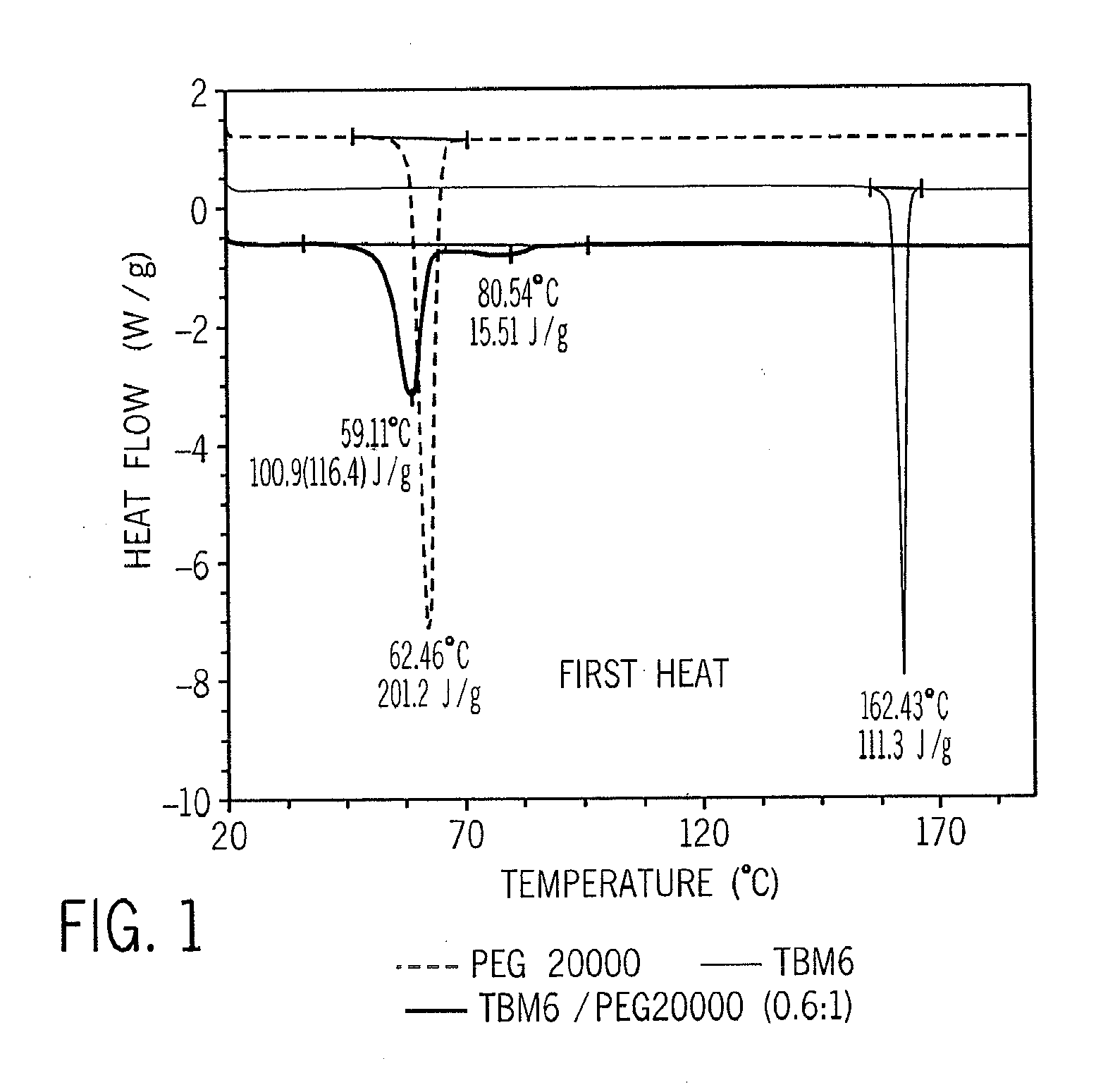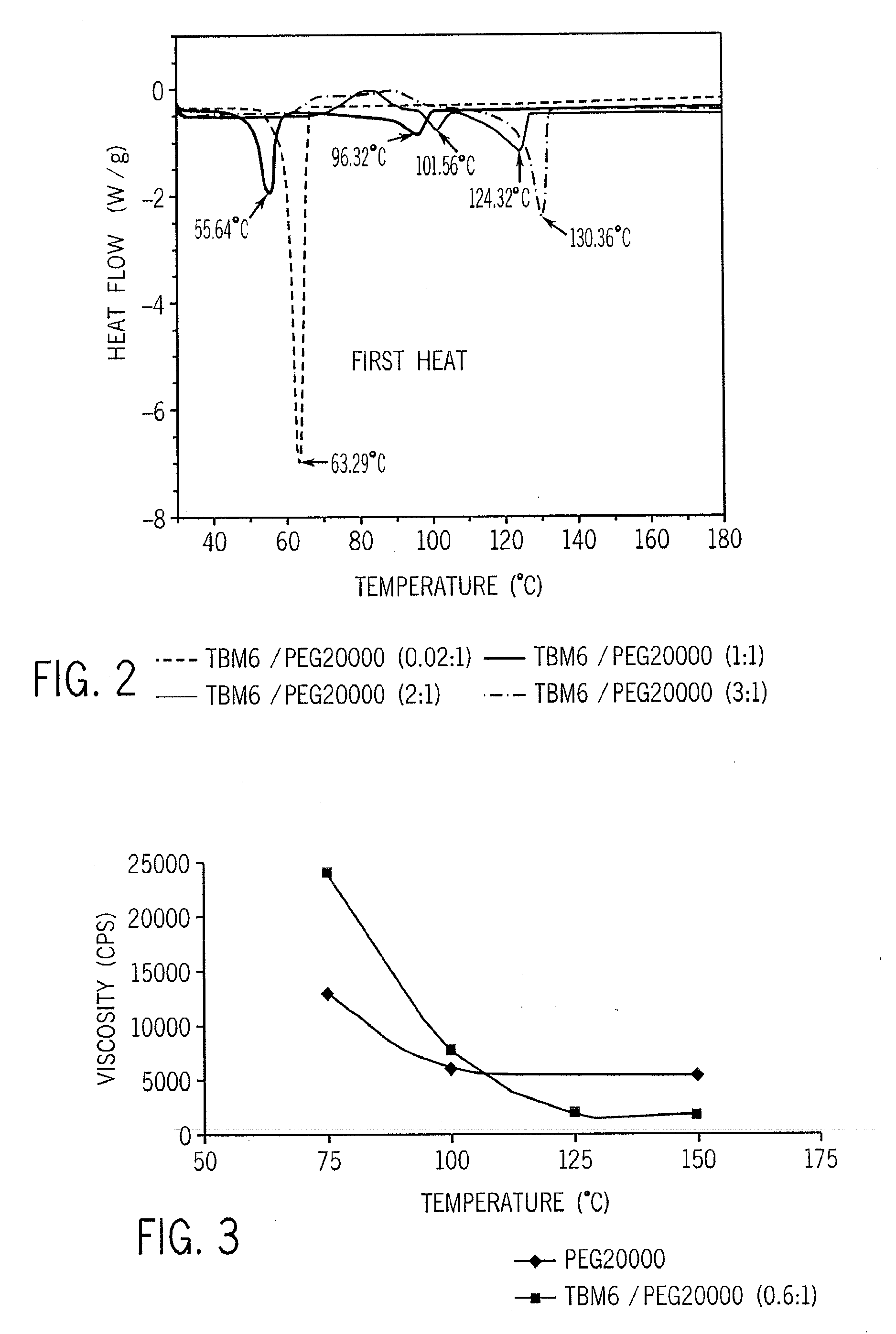Thiobis Phenolic Antioxidant/Polyethylene Glycol Blends
a technology of thiobis phenolic antioxidant and polyethylene glycol, which is applied in the direction of plastic/resin/waxes insulators, organic insulators, transportation and packaging, etc., can solve the problems of difficult metering of additives into compounds, unmelted tbm6 particles in polyethylene insulation compositions, and inability to meet the requirements of oxidative stability, etc., to achieve high oxidative induction time (oit) and measure the oxidative stability stability
- Summary
- Abstract
- Description
- Claims
- Application Information
AI Technical Summary
Benefits of technology
Problems solved by technology
Method used
Image
Examples
specific embodiments
[0064]Materials
[0065]Chemtura Corporation Lowinox TBM6 (CAS Reg. Number: 96-69-5) [4,4′-Thiobis(6-tert-butyl-m-cresol) or 4,4′-Thiobis (2-t-butyl-5-methylphenol)].
[0066]Polyethylene glycol, MW 20,000 (CAS Reg. Number: 25322-68-3).
[0067]Pre-Formed Blend
[0068]PEG having a molecular weight of 20,000 before processing is melted at a temperature between 100° C. and 120° C. using a stationary heating device with stirring capability. The temperature is kept in this range to avoid the chemical breakdown of PEG 20000 which can occur at elevated temperatures. A ratio of TBM6 to PEG 20000 of 0.6:1 is employed. The appropriate weight of TBM6 is carefully added to the melted PEG 20000 with continuous stirring until total dissolution of the TBM6 occurs. The pre-formed mixture is removed from heat source and allowed to cool at ambient condition (23° C. and atmospheric pressure). The cooled product is a homogeneous solid. Additional samples at different ratios of TBM6 to PEG 20000 are blended in th...
PUM
| Property | Measurement | Unit |
|---|---|---|
| weight percent | aaaaa | aaaaa |
| temperature | aaaaa | aaaaa |
| melting point | aaaaa | aaaaa |
Abstract
Description
Claims
Application Information
 Login to View More
Login to View More - R&D
- Intellectual Property
- Life Sciences
- Materials
- Tech Scout
- Unparalleled Data Quality
- Higher Quality Content
- 60% Fewer Hallucinations
Browse by: Latest US Patents, China's latest patents, Technical Efficacy Thesaurus, Application Domain, Technology Topic, Popular Technical Reports.
© 2025 PatSnap. All rights reserved.Legal|Privacy policy|Modern Slavery Act Transparency Statement|Sitemap|About US| Contact US: help@patsnap.com


